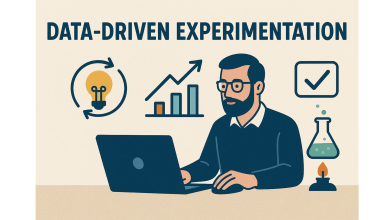Businesses collect enormous amounts of data from their backend operations and customers. Customer data often contains sensitive financial or healthcare-related information, putting it at risk for cybercrimes attempting to steal data.
Some common threats to data privacy include:
● Unauthorized access at physical locations or via former employees
● Malware and ransomware attacks
● Phishing schemes via email or website contact submissions
● Security gaps where applications, users, or devices overlap with one another
Data threats vary across each of your organization’s departments, with unique vulnerabilities for each type of equipment, communication method, device, cloud environment, or network server. Putting it simply, maintaining data privacy is a very challenging task. Fortunately, artificial intelligence (AI) can help.
Here are three ways AI can help your business better protect customer data.
1. Meet Compliance Standards
Different countries and regions have varying laws surrounding data usage and storage, but the basic principle is the same – make every possible effort to protect customer data from unauthorized access and use. Failure to meet compliance standards can be very costly for businesses. Not only do you risk breaking customer trust, but you also risk penalties and fees.
Maintaining compliance becomes more time-consuming and expensive as things like digital payment channels and electronic records evolve. In the financial industry alone, large firms spend an average of $10,000 per employee on compliance maintenance.
AI can help your business automate compliance-related tasks and better meet legal standards and industry guidelines. More than 40% of privacy compliance technology organizations will use AI by next year. Companies can implement AI tools as part of a larger regulation technology (RegTech) plan to simplify organization-wide compliance.
These are just a few ways AI can improve your business’s approach to compliance:
● Use AI algorithms to quickly scan and update existing data to meet new compliance standards.
● Use AI findings to perform more targeted data privacy audits and save time by highlighting key datasets requiring your attention.
● Measure and monitor compliance policies to make improvements as needed.
● Establish AI algorithms to spot discrepancies in typical data patterns to flag concerns before they have a chance to escalate.
● Supplement your compliance team’s current efforts by narrowing critical focus areas with specific parameters.
● Quickly determine which part of a dataset isn’t meeting current compliance requirements.
When used correctly, AI ultimately lets you better identify and correct compliance issues before they happen, helping you avoid penalties and retain customer trust.
2. Minimize User Access
With so much data circulating between users, devices, and locations, human error and data loss are nearly unavoidable. AI can help you automate certain tasks to minimize how many people can access customer data and makes it easier to organize and classify incoming data to improve your customers’ and employees’ experiences.
For example, AI automation can help:
● Increase data visibility across the entire organization for more comprehensive security.
● Understand datasets – like knowing the difference between Social Security and phone numbers – and organize or retrieve them automatically.
● Create, assign, and verify identity credentials.
● Perform automated tasks relating to data access and compliance regulations.
● Reduce administrative burdens by eliminating manual entry, access, and retrieval.
Minimizing user access is especially critical in sensitive industries like healthcare. Healthcare data is more at risk for unauthorized access and misuse than ever before, largely due to COVID-19’s impact on data collection.
Healthcare data privacy was challenging even before the global health crisis complicated an already complex process. More than 500 healthcare data breaches encompassing 41.2 million records were disclosed in 2019 alone. In the same year, the average cost of a data breach in this industry was $15 million.
3. Enhance Threat Detection Processes
Data covers an extensive surface area spanning devices, user profiles, servers, and the cloud. Fast and effective threat detection is the best way to protect customer data privacy and save your company from hefty remediation costs.
AI-based security tools and systems can help you better assess your business’s current security measures to identify vulnerabilities and make automated updates as needed. They can also flag potential threats in real-time for faster isolation and remediation.
When you pair AI with other tools like machine learning (ML) and the internet of things (IoT), you can protect your business with multiple layers of security to detect the first signs of malware, ransomware, phishing schemes, and much more.
Some ways you might use AI for threat detection include:
● Pattern deviation: AI learns your system’s established patterns based on historical data and behaviors. Paired with ML, you can design and implement specific threat detection patterns for everything from your company website to your employees’ user profiles. AI detects pattern deviations in real-time, alerting you right away if there’s an abnormal user, device, or possible threat.
● Educated predictions: AI uses predictive algorithms and up-to-date industry data to determine which specific threats you are most likely to encounter and how that threat will likely attack. These insights let you take a more proactive approach to data security by securing high-risk areas and vulnerabilities. This also keeps costs low by allocating resources to the most impactful areas.
● Faster response: With real-time detection, automatic system updates, and instant alerts, AI security closes the gap in threat detection, protecting your customers’ data and sparing you fees and a burned reputation.
● Detailed insights: AI-powered threat detection goes beyond detection and remediation. It also provides detailed information about the threat so you know where your system or team’s vulnerable entry points are, can add additional security or training as needed, and reduce the chance of future attacks.
Stay Vigilant and Protected With AI-Powered Security
Data theft and cybercrimes can cost your business money and customer trust. Protect your employee and customer data with AI-powered security for a more comprehensive, proactive, and aggressive defense.



